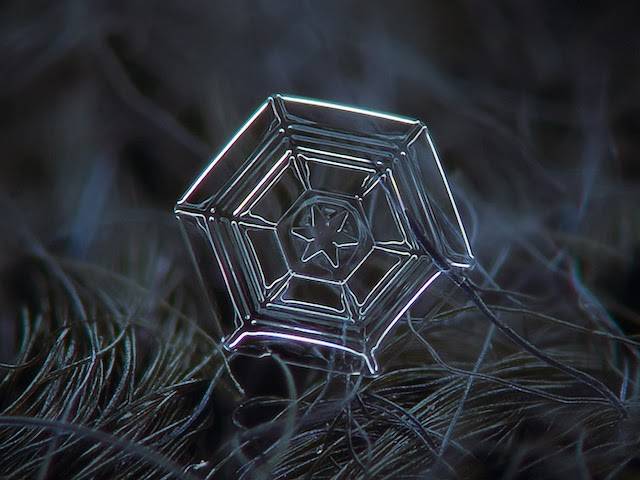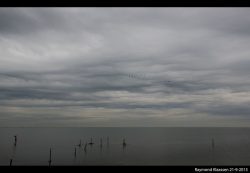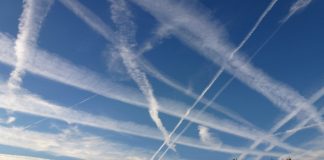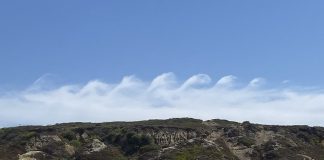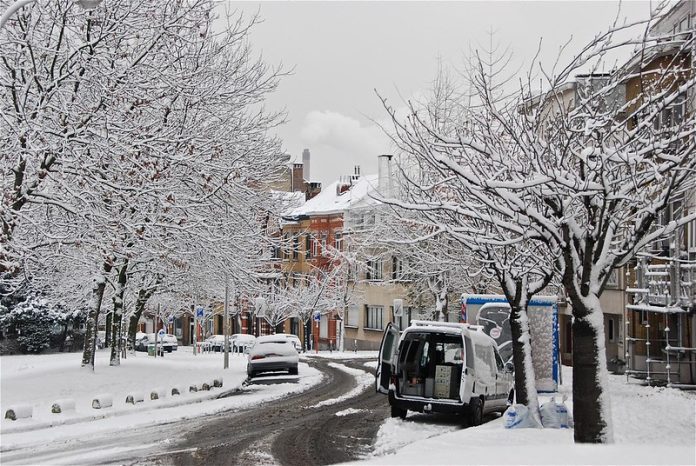
Winter precipitation types, a fascinating aspect of meteorology, can be both mesmerizing and hazardous. As temperatures drop and wintry conditions prevail, understanding the science behind these weather phenomena becomes essential.
In this article, we will investigate the complexities of snow generation, looking into how temperature and moisture can contribute to making various sizes and shapes of snowflakes. We’ll also discuss the differences between sleet and freezing rain – two winter precipitation types that often wreak havoc on transportation safety.
Forecasting challenges associated with predicting winter precipitation events will be examined as well. Meteorologists rely on atmospheric temperature profiles along with advanced tools to provide accurate predictions for public safety purposes.
Lastly, we’ll touch upon weather preparedness during winter months by sharing tips for safe driving in adverse conditions and preparing your home for snow, sleet, or freezing rain events. Moreover, climate change impacts on winter precipitation patterns will be discussed under different scenarios – a critical topic affecting ecosystems and human activities alike.
Dive into our comprehensive guide to unravel the mysteries surrounding winter precipitation types!
The Formation of Snow: A Chilly Journey from Vapor to Ice
Let’s talk snow, shall we? Snowflakes are fascinating little ice crystals that form in a unique way. Curious about the process? Keep reading.
The Role of Temperature and Humidity in Snow Formation
It all starts with very cold air. This chilly atmosphere must have close to 100% relative humidity for snow formation to occur. In this environment, water vapor transforms directly into solid ice without passing through a liquid phase – pretty cool, right?
How Different Shapes and Sizes of Snowflakes Are Created
No two snowflakes are alike – or so they say. The journey these tiny ice crystals take through the atmosphere determines their final shape and size as they combine together, forming beautiful, intricate patterns.
- The largest recorded snowflake was 15 inches wide. It fell during a storm in Montana back in 1887.
Now that you know how these lovely winter wonders come into existence, let’s dive deeper into the world of winter precipitation.
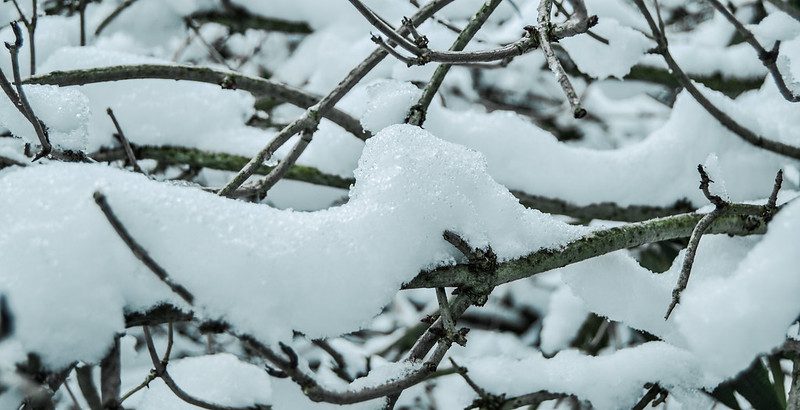
Winter Precipitation Types: Sleet and Freezing Rain
Winter precipitation can come in many forms, including sleet and freezing rain. Sleet occurs when snowflakes partially melt as they fall through a layer of warm air, then refreeze before reaching the ground.
Freezing rain occurs when snowflakes fully dissolve in a layer of warm air, then refreeze into an icy coating once they come into contact with a cold surface. Both types of wintry precipitation can make for hazardous driving conditions, so it’s important to stay informed and take precautions when necessary.
Wintery weather can bring about various forms of precipitation, such as snowfall that may lead to power outages and travel issues, plus a mix comprising sleet, freezing rain, and snow. Understanding the different types of winter precipitation can help you prepare for whatever Mother Nature has in store.
Remember to bundle up and enjoy the beauty of snowflakes this winter season.
Key Takeaway:
Snowflakes are formed when water vapor transforms directly into solid ice in a chilly atmosphere with close to 100% relative humidity. Different shapes and sizes of snowflakes are created as they combine together, forming beautiful, intricate patterns. Winter precipitation can come in many forms, including sleet and freezing rain, which can make for hazardous driving conditions, so it’s important to stay informed and take precautions when necessary.
Sleet vs. Freezing Rain: Understanding the Difference
Winter is here, and with it comes various types of winter precipitation.
But do you know the difference between sleet and freezing rain?
No worries, I’ve got your back.
Let’s dive into these two wintry precipitation types and learn how to identify them.
Factors Contributing to Sleet or Freezing Rain Conditions
Sleet forms when falling raindrops freeze into small pellets before reaching the ground. This occurs when a layer of freezing air is located above the surface, causing liquid droplets to solidify mid-fall.
In contrast, freezing rain happens when supercooled droplets land on surfaces below freezing temperatures, creating a layer of ice. This takes place due to a shallow cold layer near the ground while warmer air aloft keeps precipitation in liquid form until contact.
Impacts on Transportation Safety Due to Sleet and Freezing Rain
Road safety is crucial during winter months as both sleet and freezing rain can create hazardous conditions for drivers.
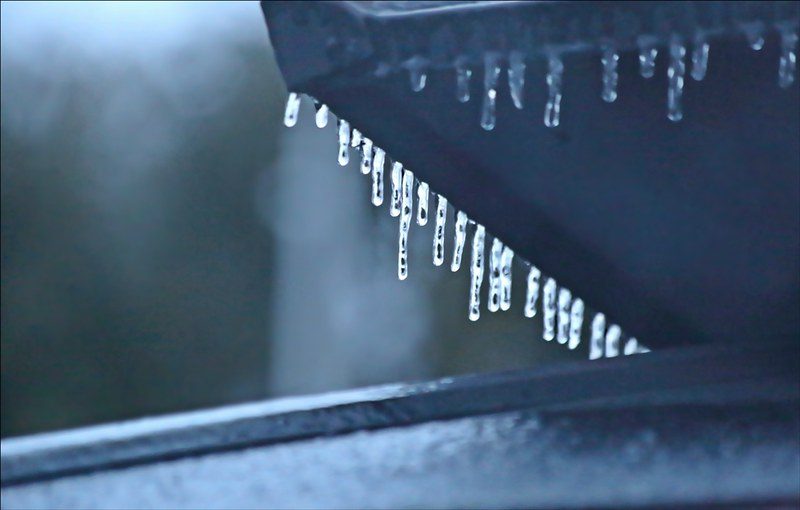
- Sleet: This type of winter precipitation often results in reduced visibility along with slippery roads due to accumulated ice pellets. The Federal Highway Administration warns that sleet can cause skidding and longer stopping distances.
- Freezing Rain: This is even more dangerous, as it creates a glaze of ice on roads, sidewalks, and other surfaces. This icy layer makes driving treacherous and increases the risk of accidents due to loss of traction.
Be prepared for winter weather conditions by having an ice scraper, warm clothing, and a fully charged cell phone handy. Ready.gov offers comprehensive tips on preparing your vehicle for winter travel.
In conclusion, sleet and freezing rain may appear similar at first glance but distinctly different in their formation process and impact on transportation safety. Educating yourself about these winter precipitation types will help you better prepare for the challenges they present during the colder months.
Key Takeaway:
Winter precipitation comes in different forms, including sleet and freezing rain. Sleet is formed when falling raindrops freeze into small pellets before reaching the ground due to a layer of freezing air above the surface while freezing rain happens when supercooled droplets land on surfaces below freezing temperatures. Both types can create hazardous conditions for drivers, but being prepared with essential items like an ice scraper and warm clothing can help ensure safety during winter weather conditions.
Winter Precipitation Forecasting Challenges
Figuring out winter precipitation can be a real pain. But why is that?
Well, forecasting whether an area will experience snow, sleet, or freezing rain is quite challenging for meteorologists due to various factors, such as temperature fluctuations throughout different layers of the atmosphere.
Role Played by Atmospheric Temperature Profiles
The key here lies in understanding how temperatures at different altitudes affect precipitation types. To gain further insight into the role of atmospheric temperature profiles in precipitation types, meteorologists utilize radar data to track and analyze patterns.
Tools Used by Meteorologists for Accurate Forecasting
- Radar: Meteorologists rely on radar data to track and analyze precipitation patterns in real time.
- Numerical Weather Prediction Models: These computer models simulate weather conditions based on current observations and help forecasters predict future events. Learn more about them here.
- Satellite Imagery: Satellites provide valuable information on cloud cover and other atmospheric conditions that influence winter weather predictions. Check out some cool satellite images here.
Despite these tools, predicting winter precipitation types remains a complex task. But hey, that’s what makes weather forecasting such an exciting field.
So next time you’re checking your local forecast for snow, sleet, or freezing rain, remember the challenges meteorologists face and appreciate their efforts to keep us informed and prepared.
Eager to learn more about winter weather? Dive into this comprehensive guide on winter weather safety.
Weather Preparedness During Winter Months
Winter is approaching, and with it comes a host of challenges. As an experienced blog editor with a focus on SEO, I know that understanding the different types of winter precipitation is crucial to staying safe and prepared for whatever Mother Nature has in store. So, let’s dive into some tips to help you weather the winter months.
Tips for Staying Safe While Driving in Winter Weather Conditions
#1: Slow down. Allow yourself sufficient time to respond in the event of any potential risks on the street.
#2: Keep a winter emergency kit in your vehicle, including items like blankets, food, water, and a flashlight.
#3: Always clear snow and ice from your windows, mirrors, lights, and roof before hitting the road. Visibility is key.
#4: Maintain at least three times more following distance than usual between you and the car ahead of you. Slippery roads require extra stopping space.
Preparing Your Home for Snow, Sleet, and Freezing Rain Events
It’s not just you that needs to be prepared for winter weather – your home does too.
- Increase insulation: Make sure your home has adequate insulation in walls and attics to prevent heat loss and save energy costs.
- Gutter check: Clean gutters and downspouts regularly throughout winter months; clogged gutters may lead to dangerous icicles or even ice dams.
- Pipe protection: Insulate exposed pipes (both indoor and outdoor) against freezing temperatures; frozen pipes can burst, causing significant damage.
- Snow removal tools: Stock up on snow shovels, ice melt, and even a roof rake to help prevent heavy snow accumulation from causing damage.
- Emergency supplies: Keep a home emergency kit stocked with essentials like non-perishable food, water, flashlights, and extra batteries in case of power outages or other winter-related emergencies.
By staying informed about winter precipitation types and taking appropriate precautions for both driving and home safety, you’ll be well-prepared to face whatever challenges this frosty season may bring.
Key Takeaway:
Stay safe and prepared during winter months by understanding different types of winter precipitation. Slow down while driving, maintain a distance from the car ahead, keep an emergency kit in your vehicle, and clear snow and ice from windows before hitting the road. Prepare your home for snow, sleet, and freezing rain events by increasing insulation, cleaning gutters regularly throughout winter months to prevent dangerous icicles or even ice dams formation; insulating exposed pipes against freezing temperatures that can cause significant damage; stocking up on snow shovels, ice melt & roof rake to help prevent heavy snow accumulation causing damage.
Climate Change Impacts on Winter Precipitation Patterns
Let’s talk climate change, folks.
As temperatures increase, winter precipitation patterns will be altered, potentially impacting our favorite winter activities. This means that our beloved snow days and icy adventures may be affected.
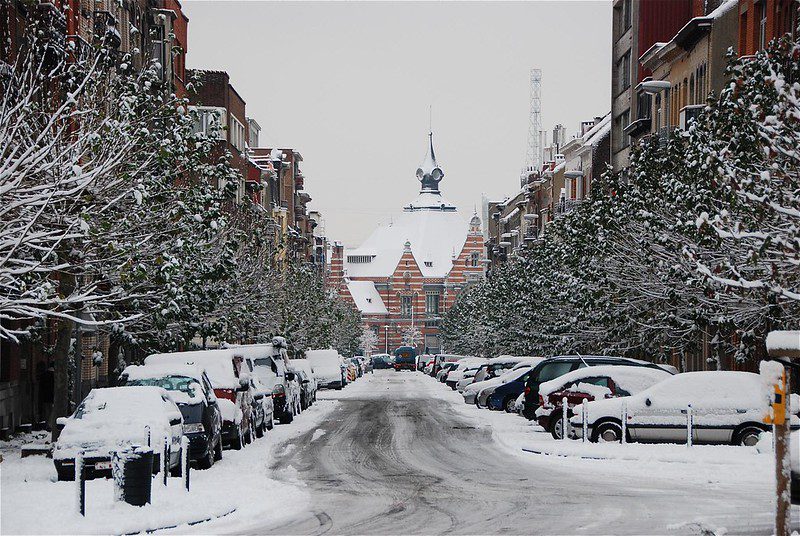
The Projected Trends in Winter Precipitation Patterns under Different Climate Scenarios
Various climate scenarios make it tricky to predict the exact changes in winter weather. Prepare for a bumpy ride as winter weather patterns become more unpredictable and extreme events like heavy snowfall or ice storms are expected.
So, buckle up and prepare for a wild ride through unpredictable winters.
Potential Consequences for Ecosystems and Human Activities
Ecosystems will undoubtedly feel the effects of these changing patterns as well. In some areas, warmer temperatures may lead to less snow cover, impacting wildlife habitats and plant life cycles.
FAQs in Relation to Winter Precipitation Types
What types of precipitation occur in winter?
During winter months, various forms of precipitation can occur, such as snow, sleet, freezing rain, and graupel. Additionally, hail may also be observed during thunderstorms in colder climates or at higher elevations.
Why are there different types of winter precipitation?
Different types of winter precipitation result from varying atmospheric conditions like temperature profiles and humidity levels. These factors determine whether frozen particles remain solid (as snow), partially melt then refreeze (sleet), or fully melt then freeze on contact with a surface (freezing rain).
What are the four types of winter precipitation, and how are they defined?
- Snow: Frozen ice crystals that form into flakes due to low temperatures throughout the atmosphere.
- Sleet: Small ice pellets created by partial melting and refreezing of falling snowflakes.
- Freezing Rain: Liquid droplets that freeze upon contact with cold surfaces, forming a glaze of ice.
- Graupel: Snowflakes coated in supercooled water droplets that freeze on the surface, creating soft hail-like pellets.
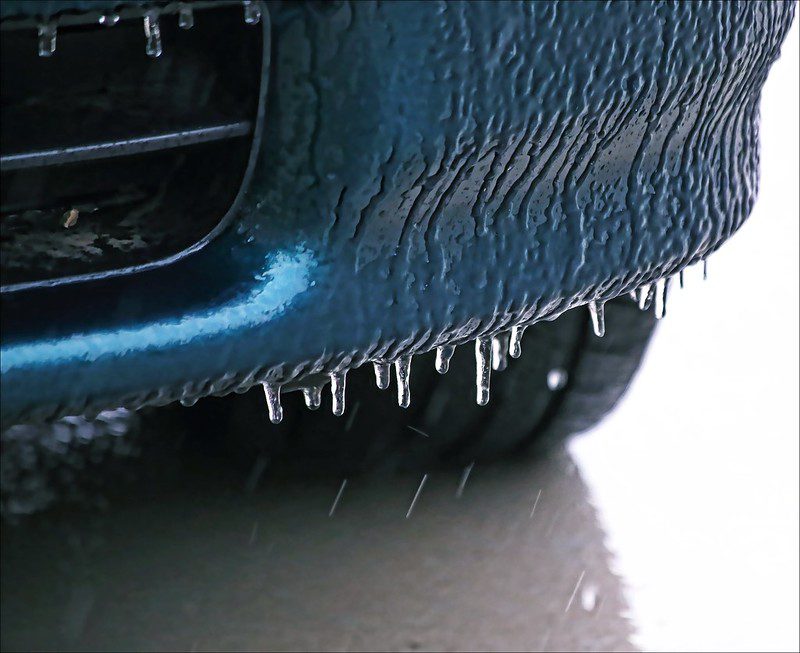
Conclusion
Winter Precipitation Types can be fascinating and beautiful but also dangerous if not understood. In this post, we will explore the formation of snowflakes and how different atmospheric conditions contribute to sleet or freezing rain events. We will also discuss the challenges meteorologists face in accurately forecasting winter precipitation patterns.
To stay safe during the winter months, it is essential to prepare for potential weather hazards by following tips for driving on icy roads and preparing your home for snow and ice accumulation. Finally, we will learn about projected trends in winter precipitation patterns under different climate scenarios that could have significant impacts on ecosystems and human activities.
Snowflakes form when water vapor in the atmosphere freezes into ice crystals. These crystals grow as they collide with other water droplets in the air, forming unique shapes. No two snowflakes are alike! The temperature and humidity levels in the atmosphere determine the shape and size of snowflakes.
Sleet occurs when snowflakes partially melt as they fall through a layer of warm air, then refreeze as they pass through a layer of freezing air near the ground. Sleet looks like small ice pellets and can accumulate on the ground, making it slippery and hazardous.
Freezing rain occurs when snowflakes melt completely as they fall through a layer of warm air, then refreeze as they come into contact with a cold surface, such as the ground or a tree branch. Freezing rain creates a layer of ice on surfaces, making them extremely slippery and dangerous to walk or drive on.
Meteorologists face challenges in forecasting winter precipitation patterns due to the complexity of atmospheric conditions. Small changes in temperature or humidity levels can have a significant impact on the type of precipitation that falls. However, advances in technology and data analysis have improved forecast accuracy in recent years.
To stay safe during winter weather, follow these tips for driving on icy roads:
- Reduce your speed and increase your following distance
- Use snow tires or chains
- Avoid sudden movements or braking
- Use your headlights and turn signals
To prepare your home for snow and ice accumulation, follow these tips:
- Stock up on food, water, and emergency supplies
- Insulate pipes and faucets to prevent freezing
- Clear gutters and downspouts to prevent ice dams
- Trim tree branches that could fall on your home or car
Projected trends in winter precipitation patterns under different climate scenarios suggest that some regions may experience more frequent and intense winter storms while others may experience less. These changes could have significant impacts on ecosystems and human activities, such as transportation and agriculture.
Stay safe and enjoy the beauty of winter precipitation types!






































